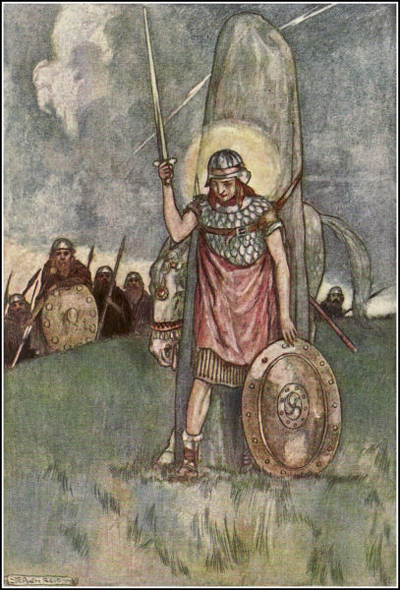Clochafarmore on:
[Wikipedia]
[Google]
[Amazon]
Clochafarmore is a menhir (standing stone) and

 The standing stone, 3 metres high, was erected at an unknown point in the distant past, believed to be during the
The standing stone, 3 metres high, was erected at an unknown point in the distant past, believed to be during the
National Monument
A national monument is a monument constructed in order to commemorate something of importance to national heritage, such as a country's founding, independence, war, or the life and death of a historical figure.
The term may also refer to a spec ...
in County Louth
County Louth ( ; ga, An Lú) is a coastal county in the Eastern and Midland Region of Ireland, within the province of Leinster. Louth is bordered by the counties of Meath to the south, Monaghan to the west, Armagh to the north and Down to the ...
, Ireland.
Location
Clochafarmore is located east-northeast of Knockbridge,Dundalk
Dundalk ( ; ga, Dún Dealgan ), meaning "the fort of Dealgan", is the county town (the administrative centre) of County Louth, Ireland. The town is on the Castletown River, which flows into Dundalk Bay on the east coast of Ireland. It is h ...
on the left bank of the River Fane.
History and legend

 The standing stone, 3 metres high, was erected at an unknown point in the distant past, believed to be during the
The standing stone, 3 metres high, was erected at an unknown point in the distant past, believed to be during the Bronze Age
The Bronze Age is a historic period, lasting approximately from 3300 BC to 1200 BC, characterized by the use of bronze, the presence of writing in some areas, and other early features of urban civilization. The Bronze Age is the second pri ...
.
This standing stone is traditionally associated with the death of the legendary hero Cúchulainn. Lugaid mac Con Roí has three magical spears made, and it is prophesied that a king will fall by each of them. With the first he kills Cú Chulainn's charioteer Láeg; with the second he kills Cú Chulainn's horse, Liath Macha
Liath Macha ("grey orseof Macha") and Dub Sainglend ("black orseof Saingliu") are the two chariot-horses of Cúchulainn in the Ulster Cycle of Irish mythology
Irish mythology is the body of myths native to the island of Ireland. It wa ...
; with the third he hits Cú Chulainn, mortally wounding him. Cú Chulainn ties himself to a standing stone — traditionally Clochafarmore ("Stone of the Big Man"), which had been erected to mark the grave of a past great warrior.
Cú Chulainn continues to fight his enemies, and it is only when a raven
A raven is any of several larger-bodied bird species of the genus ''Corvus''. These species do not form a single taxonomic group within the genus. There is no consistent distinction between "crows" and "ravens", common names which are assigned t ...
(the traditional form of The Morrígan
The Morrígan or Mórrígan, also known as Morrígu, is a figure from Irish mythology. The name is Mór-Ríoghain in Modern Irish, and it has been translated as "great queen" or "phantom queen".
The Morrígan is mainly associated with war and ...
) lands on his shoulder that his enemies believe he is dead. Lugaid approaches and beheads him, but as he does so the "hero-light" burns around Cú Chulainn and his sword falls from his hand and cuts Lugaid's hand off. The light disappears only after his right hand is cut off.
The region is known as ''An Breisleach Mór'', "The Great Carnage", while the field in which this stone stands is called the Field of Slaughter. In the 1920s a bronze spearhead was found in the field, perhaps showing it to be a genuine ancient battle-site.
References
{{Reflist Archaeological sites in County Louth National Monuments in County Louth